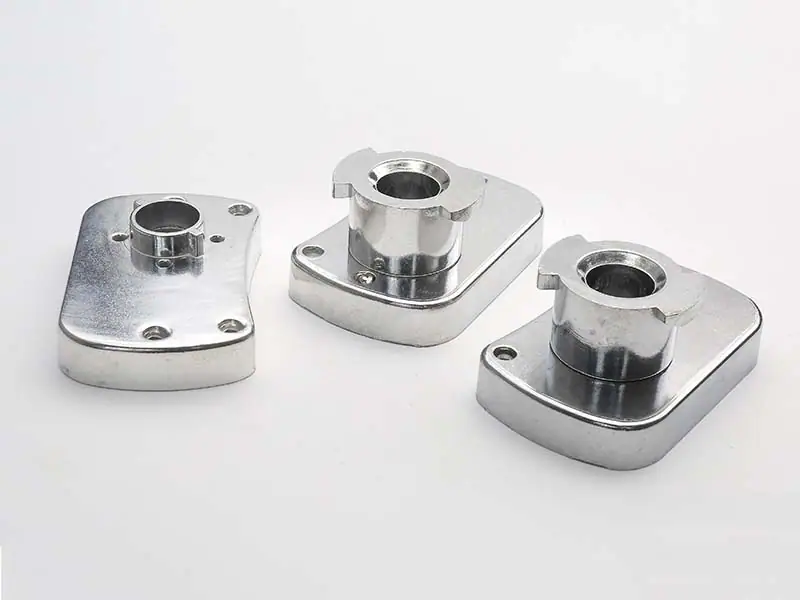Chrome-free surface passivation for aluminum alloys
Date: 2025-03-26 Categories: Blog Views: 474

Aluminum applications
Aluminum is the most productive and widely used metallic material among non-ferrous metals. It is second only to iron and steel in the production of metallic structural materials.
All-aluminum engine
The advantage of cast aluminum block in die casting production is its light weight, which enables fuel saving through weight reduction. In an engine of the same displacement, the use of aluminum cylinder block engine, can reduce the weight of about 20 kg. For every 10% reduction in the vehicle's own weight, fuel consumption can be reduced by 6% to 8%.
Disadvantages of chromate surface treatment
Chromate treatment method contains a large amount of hexavalent chromium ions in the waste tank solution, according to GB 8978-1996 "Comprehensive Emission Standards for Sewage", the concentration of hexavalent chromium in the waste tank solution is not more than 0.5mg/L. However, hexavalent chromium ions are carcinogenic to the human body. Long-term exposure to hexavalent chromium compounds can lead to lung cancer, upper respiratory tract cancer and gastrointestinal cancer, as well as dermatitis, allergic and eczematous skin reactions, and respiratory diseases, eye diseases, oral mucosal lesions, gastroenteritis, renal dysfunction, and other acute poisoning.
In order to meet the needs of an environmentally friendly society, surface treatment is moving towards replacing chroming. Therefore, our goal is to reduce environmental pollution.
Chrome-free surface passivation
at the present time aluminum Chromium-free chemical oxidation of zirconium system, titanium system, manganate system, molybdate system, rare earth system, lithium salt system, silicate system, tannate system and so on. At present, the domestic aluminum alloy anodic oxidation film without chromium sealing method using rare earth surface treatment. The effect of using cerium salt or other rare earth salt treatment method is similar to the effect of normal temperature metal salt and chromate anodic oxidation film.
Surface passivation influences
-Cerium salt concentration
-Film-forming oxidizer (potassium permanganate) concentration
-Film-forming promoter (ammonium salt) concentration
-Temperature
-Time
Experimental Procedures:
1. Degreasing treatment
Wipe with degreasing cotton moistened with solvent to remove the oil, and then wipe several times with a clean cotton cloth. Commonly used solvents are: trichloroethylene, ethyl acetate, acetone, butanone and gasoline.
2. Polishing treatment
Manual polishing, i.e. sandpaper polishing, is used according to actual needs; or chemical polishing solution is used for polishing.
3. Oxidation of aluminum
The single variable method was used to find the optimal experimental parameters and conditions.
4. Results testing and feedback
The corrosion resistance was tested by acid spot corrosion method, and the strength of the tester was tested by hardness tester. And the microstructure of the observer with an electron microscope. For the shortcomings and then improve.
Expected results
1.The treated aluminum alloys are able to meet or exceed the corrosion resistance and mechanical strength of those treated with conventional chromates.
2.The gradual replacement of chromate treatment is feasible and reliable, preferably for industrial applications. It will greatly reduce the harm caused by hexavalent chromium ions to the environment and human life and health, and make industrial production develop in the direction of environmental friendliness.
3.A complete set of SIT closure reports.
Frequently Asked Questions (FAQ) on Aluminum Applications and Chrome-Free Passivation Treatments
1. What are the advantages of aluminum in automotive engines?
Aluminum engines significantly reduce fuel consumption through lightweighting (weight reduction of about 20 kg), and a car weight reduction of 10% can save 6%-8% of fuel.
2. What are the main hazards of chromate finishes?
Chromate treatment produces carcinogenic hexavalent chromium, which causes lung cancer, skin diseases and other health problems, and pollutes the environment requiring strict emission control.
3. What are the mainstream alternatives to chrome-free passivation treatments?
Mainstream methods include zirconium, titanium, rare earth (e.g., cerium salts), and silicate systems, which are close to chromates but more environmentally friendly.
4. What are the key factors affecting the effectiveness of chrome-free passivation?
Cerium salt concentration, oxidizing agent (potassium permanganate), accelerator (ammonium salt), temperature and treatment time are the core influencing factors.
5. How to test the properties of treated aluminum alloys?
The process is optimized by testing corrosion resistance through acid corrosion, measuring strength with a hardness tester, and observing the microstructure with an electron microscope.
6. Can chromium-free treatments meet the standards for industrial applications?
The experimental goal is to surpass chromate treatment in terms of corrosion resistance and mechanical strength, and to promote the industrial replacement of environmentally friendly processes.
7. What steps are involved in an aluminum surface treatment experiment?
The process is divided into four stages: degreasing (solvent wiping), polishing (manual/chemical), oxidation (parameter optimization) and performance testing.
8. Why promote chrome-free surface treatment technology?
Reducing hexavalent chromium contamination reduces environmental and health risks and is in line with the trend of green manufacturing and international environmental regulations.
9. What are the advantages of rare earth cerium salt treatment?
Cerium salt passivation effect is close to chromate, the cost is controllable and low toxicity, is the mainstream research direction of domestic chromium-free sealing.
10. What is the significance of the study for industrial environmental protection?
Successful application of chromium-free technology will help the aluminum industry reduce emissions, drive sustainability and reduce corporate compliance risk.


















